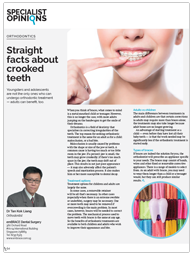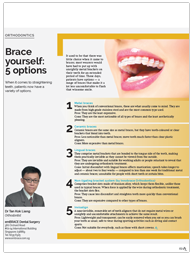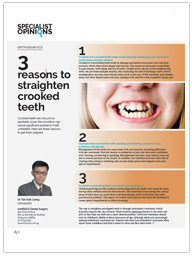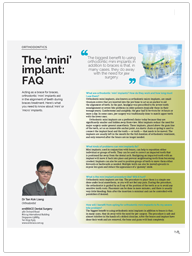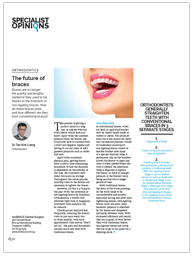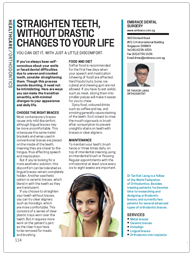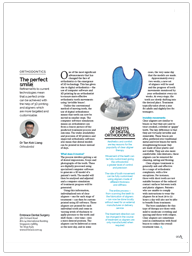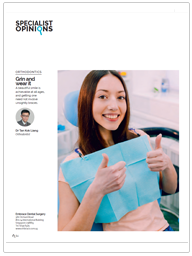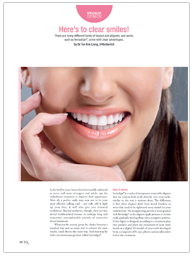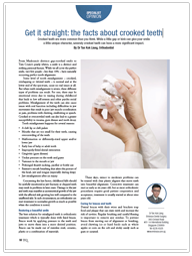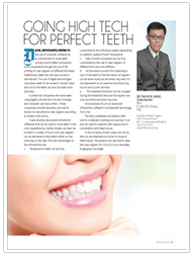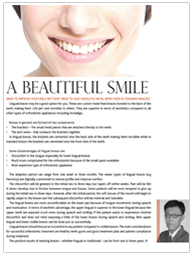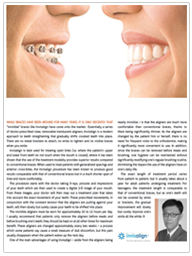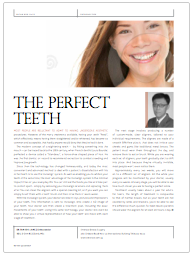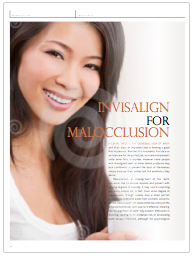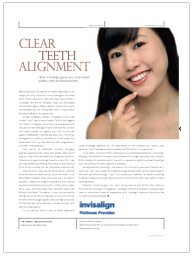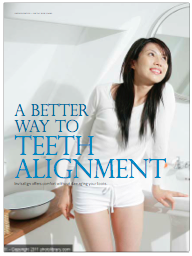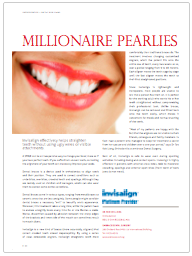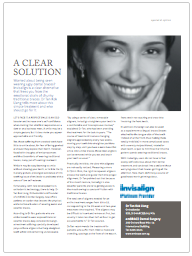Crooked teeth are more common than you think. While a little gap or kink can give your smile a little unique character, severely crooked teeth can have a more signifi cant impact.
From Madonna’s distinct gap-toothed smile to Tom Cruise’s pearly whites, a smile is a distinct and striking personal feature. While we all covet the perfect smile, very few people - less than 10% - have naturally occurring perfect tooth alignment.
Some level of tooth misalignment - crooked, overlapping or twisted teeth - is normal and at the lower end of the spectrum, cause no real issues at all. But when teeth misalignment is severe, three different types of problems can result. For one, there may be emotional stress due to teasing during childhood that leads to low self-esteem and other psycho-social problems. Misalignment of the teeth can also cause issues with oral function including difficulties in jaw movement that result in poor jaw muscle coordination or pain, problems with chewing, swallowing or speech. Crooked or overcrowded teeth can also lead to a greater susceptibility to trauma, gum disease and tooth decay.
Tooth misalignment happens for several reasons:
- A cleft lip or cleft palate
- Mouths that are too small for their teeth, causing overcrowding of the teeth
- Malformation or differently-sized upper and/or lower jaw
- Early loss of baby or adult teeth
Concerning the last factor, childhood falls should be carefully monitored as jaw fractures or chipped teeth may result in problems in later years. Damage to the jaw and teeth may manifest as asymmetrical growth of the jaw with the affected side growing less well compared to the unaffected side. In such circumstances, an orthodontist can start treatment to normalise growth as much as possible when the condition is noted.
Restoring a beautiful smile
The best solution for misaligned teeth is orthodontic treatment which is typically done with fi xed braces. Braces work by applying pressure to the teeth and jaws to move them into a more desired position. Braces can be made out of stainless steel, ceramic, plastic or a combination of materials.
These days, minor to moderate problems can be treated with clear plastic aligners that move teeth into beautiful alignment. Corrective treatment can start as early as six years old, but as most orthodontic procedures require good patient cooperation and acceptance, treatment is usually started at about nine years old.
Caring for braces and teeth
Dental braces with their wires and brackets trap food and plaque that can stain teeth and increase the risk of cavities. Regular brushing and careful flossing is important to remove any residue. To prevent braces from moving out of alignment or breaking, avoid chewing ice or hard foods such as whole apples or corn on the cob and sticky candy such as gum or caramel.

